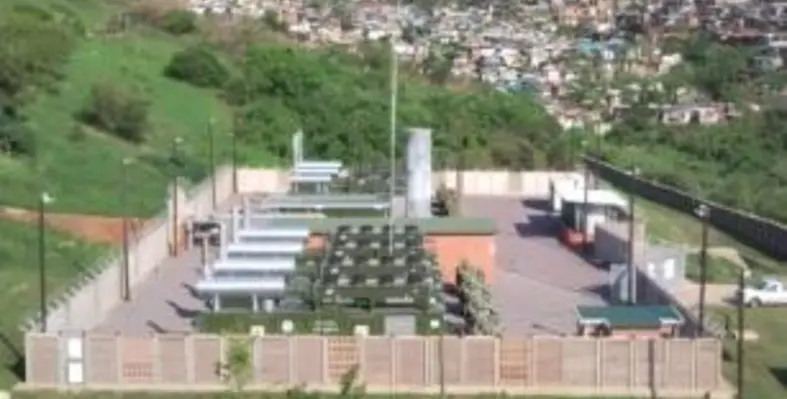Page 1 of 2The utilisation of landfill gas for power generation is well established internationally as a method of generating base-load renewable electricity. Other forms of renewables such as wind and solar struggle to generate consistency due to the intermittency of the energy source wind or the suns rays. The African continent lags massively behind the thousands of megawatts installed globally, with only a handful of megawatts of power generated from landfill gas across the continent
Organic waste – such as that from food or other materials that rot – breaks down when thrown away in a dump site. If this is at the surface typically the material composts. Here, air loving microbes feed upon the organic matter producing heat, CO2 and an inert compost. When there are large volumes of organic waste disposed of quickly in piles they swiftly exclude air becoming anaerobic. Here a different form of microbes – the same as those found in anaerobic digesters or biogas plants – thrive, producing methane from the organic material. Methane is the main constituent of natural gas, but when produced in this manner is considered to be renewable as the material has been produced in recent growing seasons and not from fossilised material deep below the ground. Methane, when not harnessed correctly, escapes into the atmosphere where is has 21 times the potency of methane as a greenhouse gas. Its capture from dumpsites is then an important way of helping to avoid climate change
In many countries across the globe waste management companies and municipalities are well aware of the win-win from harnessing landfill gas for power – the treatment of waste, the avoidance of emissions and the generation of reliable base load renewable energy. Clarke Energy’s early success in distributed generation was attributed to supplying the UK’s first large-scale renewable energy industry – the landfill gas market. To date, the company has supplied around 0.5GW of renewable power generation in the UK alone.
The African continent, however, has significant underutilisation of this technology type, but what are the challenges lying in its way?
There is the challenge of the collection of waste materials to a centralised location. Many African countries still have many thousands of small informal dumpsites and under-developed waste management infrastructure. This is partly a commercial reason as waste management services must be paid for by the citizens of a country, who may have insufficient money to pay for expensive waste collection vehicles. This follows through to the point of disposal. The large urban centres such as Lagos, due to the large number of people alone have large waste dumps. Whilst there are localised recycling efforts such as black bag recycling at the Olusosun dump site, often there has been limited engineering of the site. Dump sites can be contrasted with landfill sites by the fact the former is often developed in an ad-hoc manner and the latter has been planned and engineered with liners, cells and capping in mind.
The most effective landfill sites are lined with materials such as plastic and waste tyres to prevent any leachate from the site entering the water table. They are then built in distinct ‘cells’ to a depth in excess of 10 metres and compacted where landfill gas production becomes strongest. Finally the landfill sites are capped with wells drilled in order to extract the gas in an optimal manner. Engineering landfill sites cost money and must be paid for somehow.
Dumpsites often have communities of people lying adjacent to or even upon them. Waste sorting and scrap recovery providing an income for some of the poorest in society. To successfully engineer the landfill site these people’s lives should be taken into consideration, along with the security of any high value equipment such as generators on the site.






